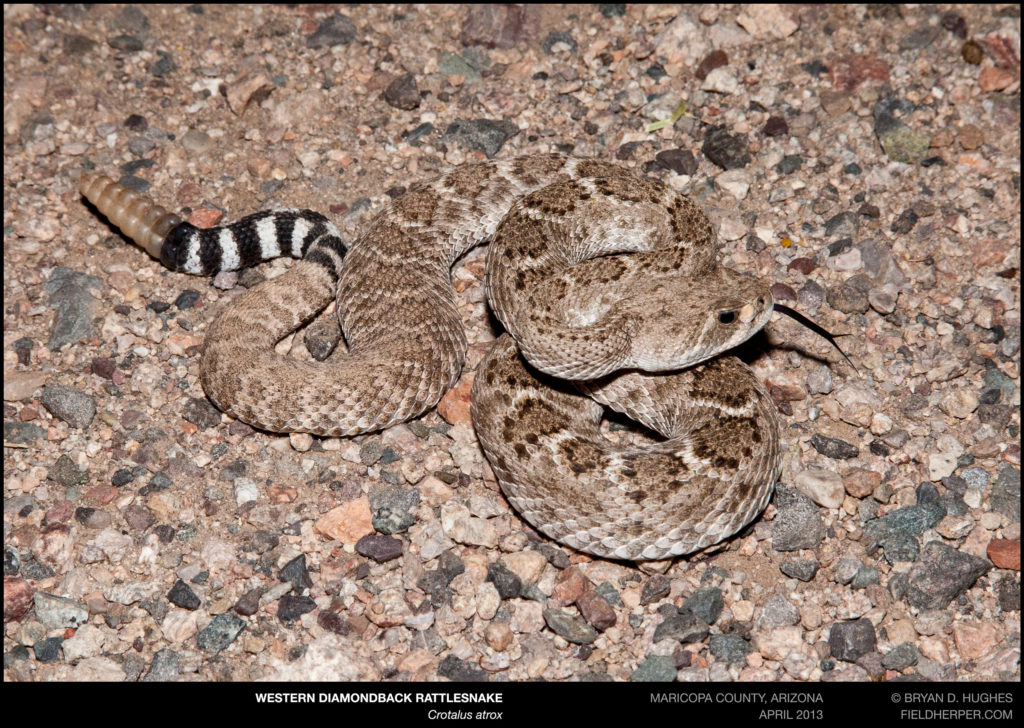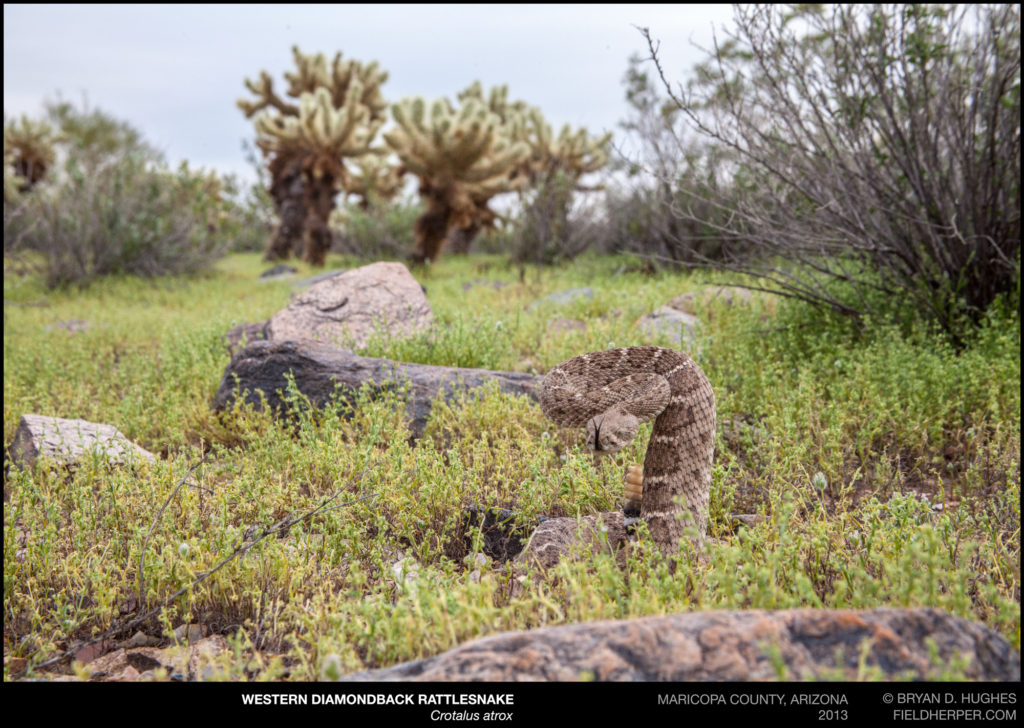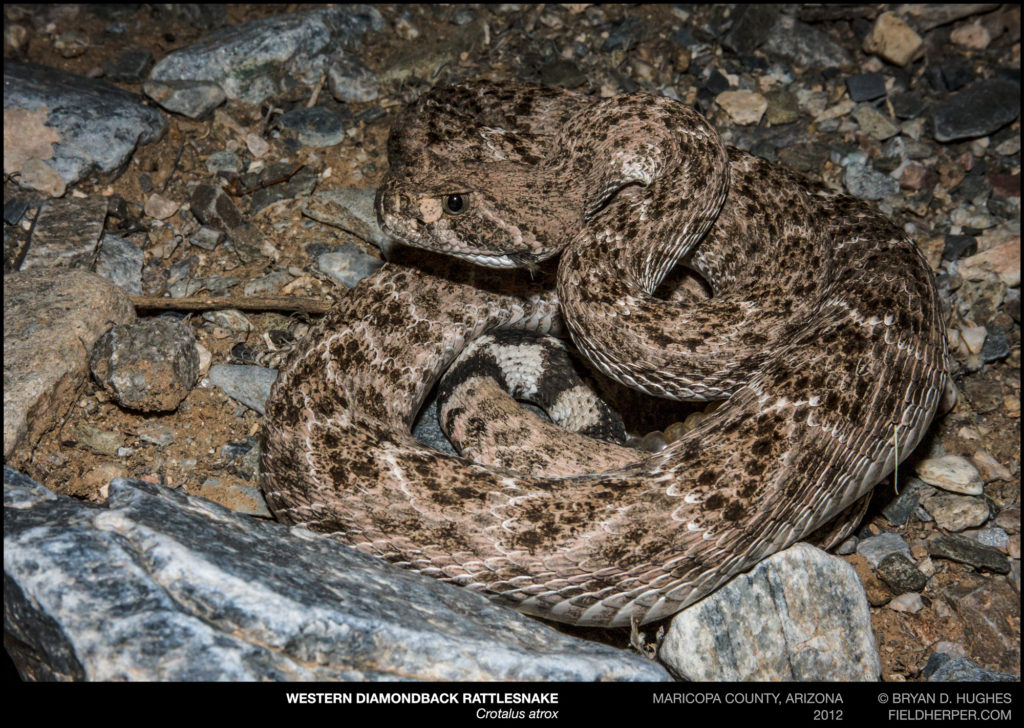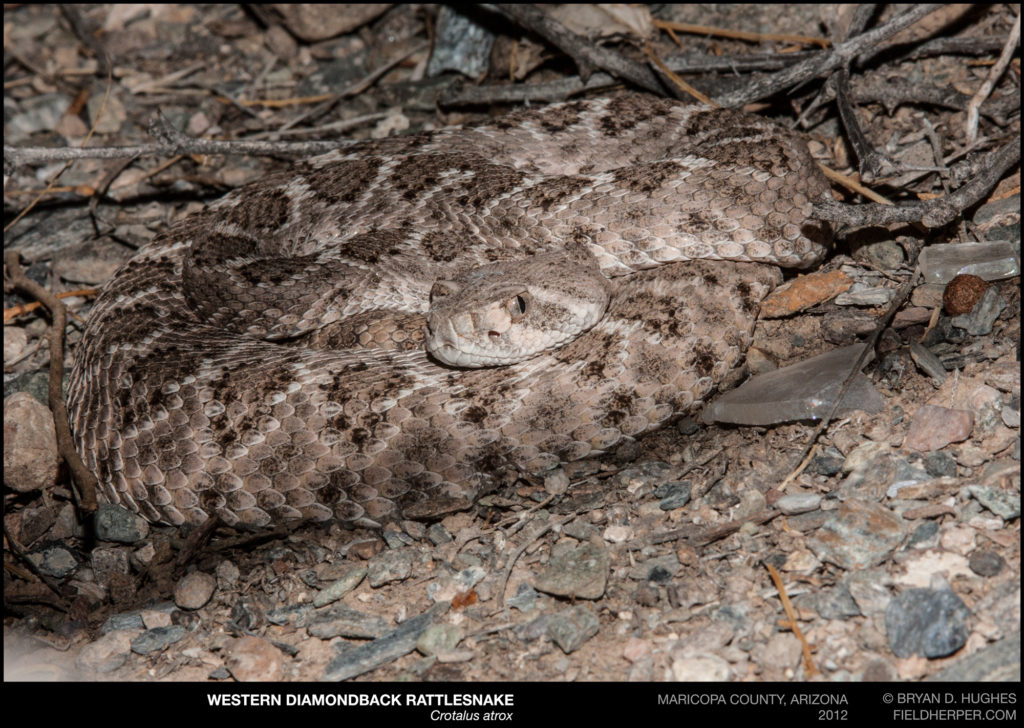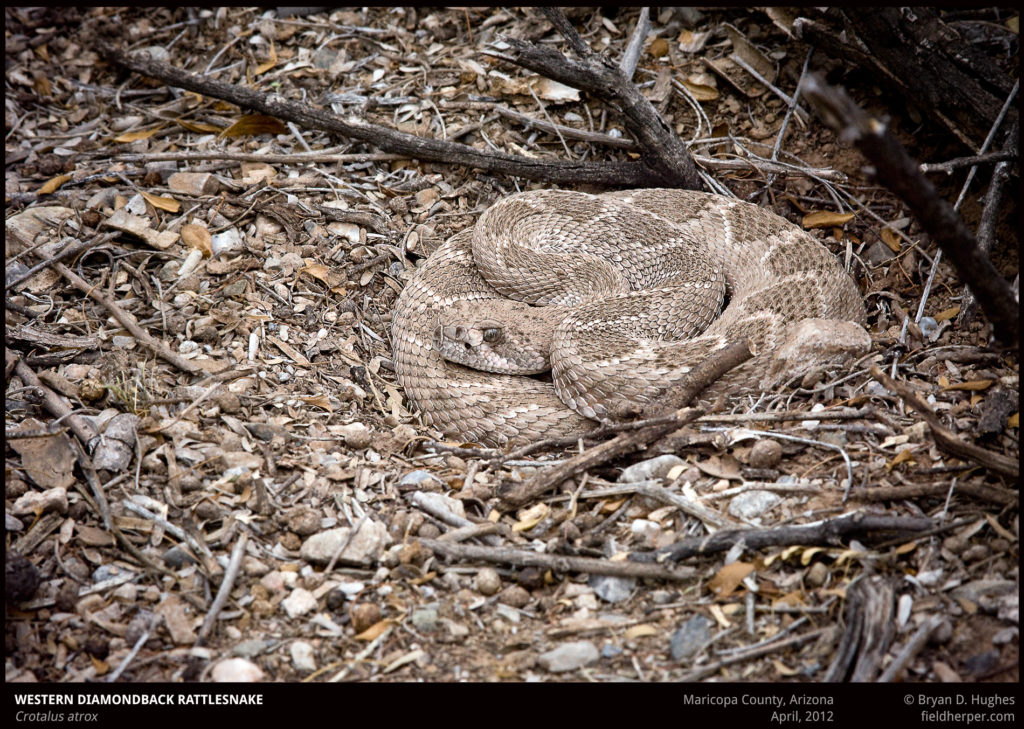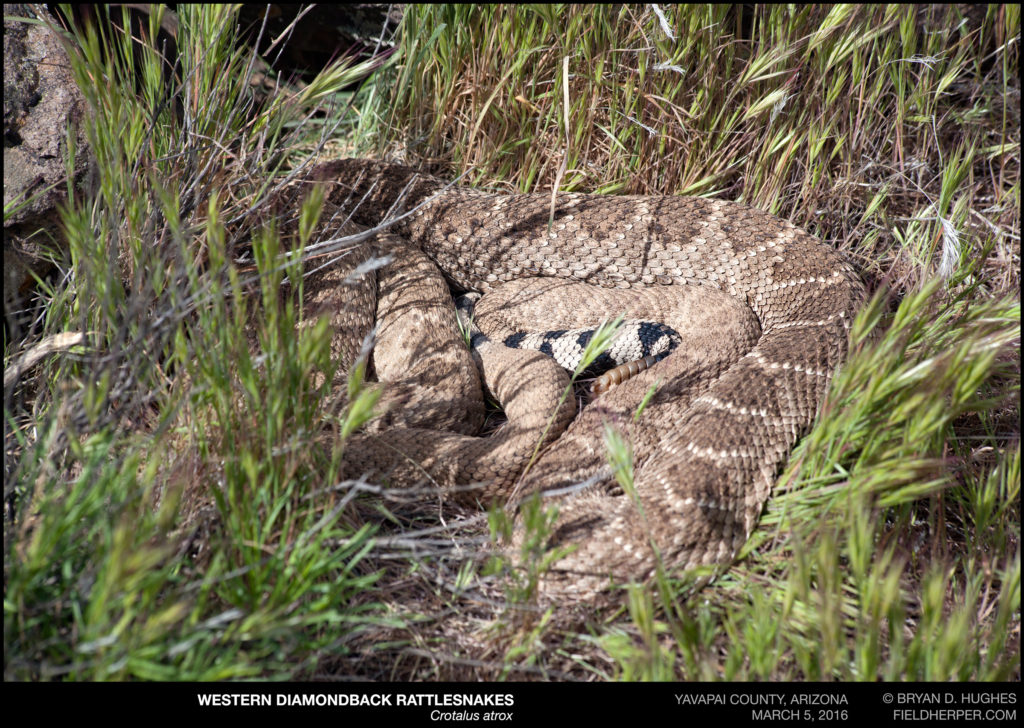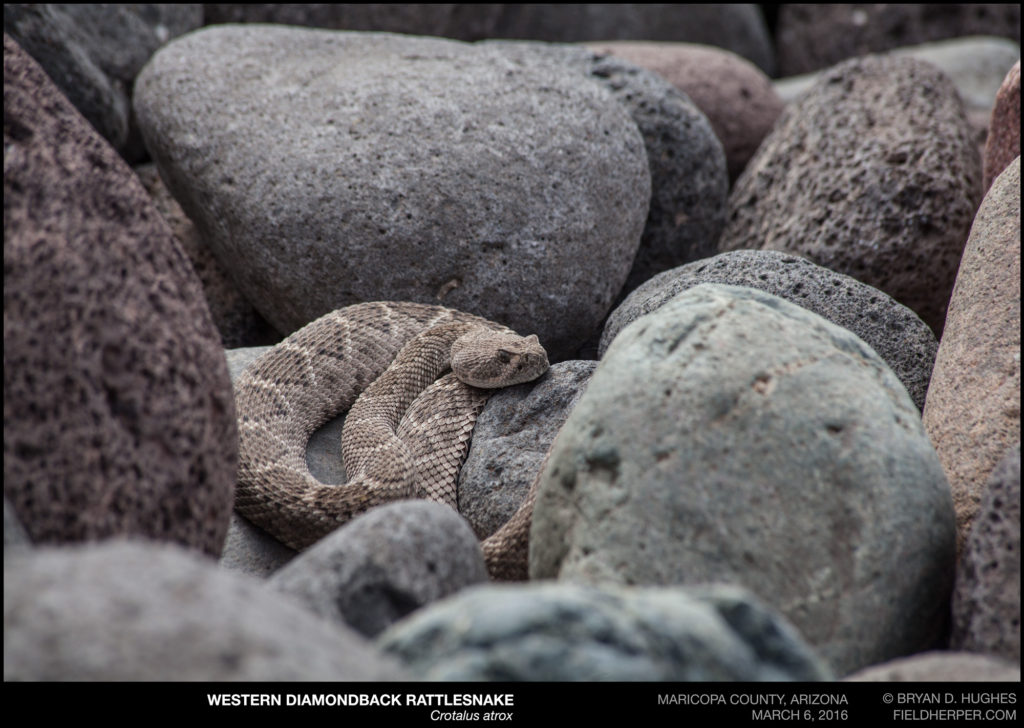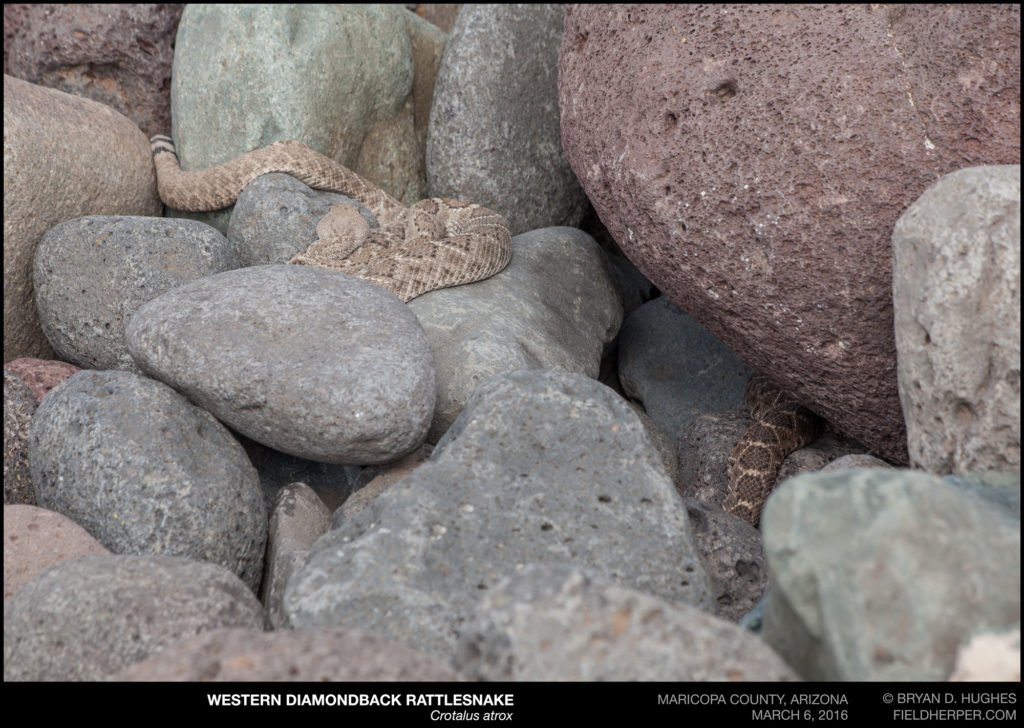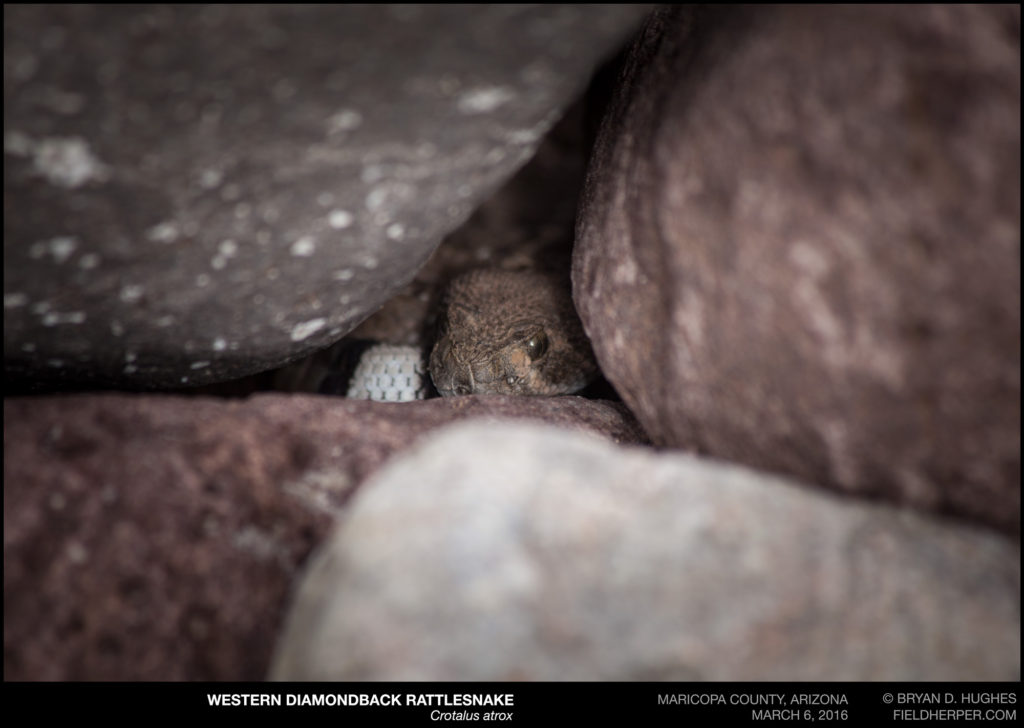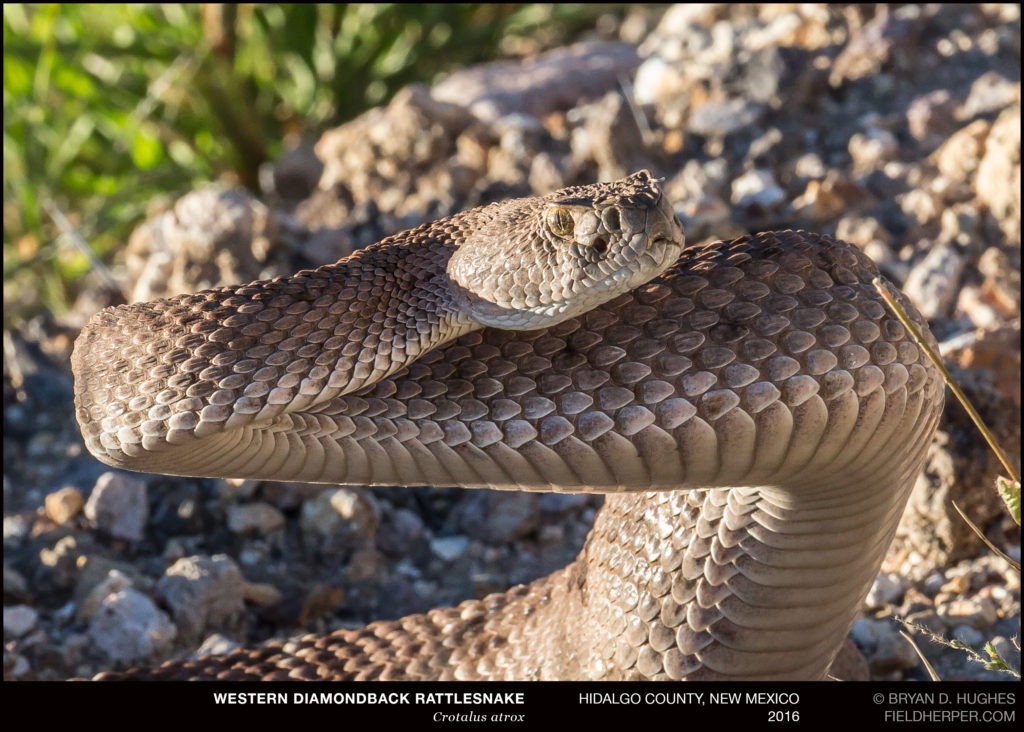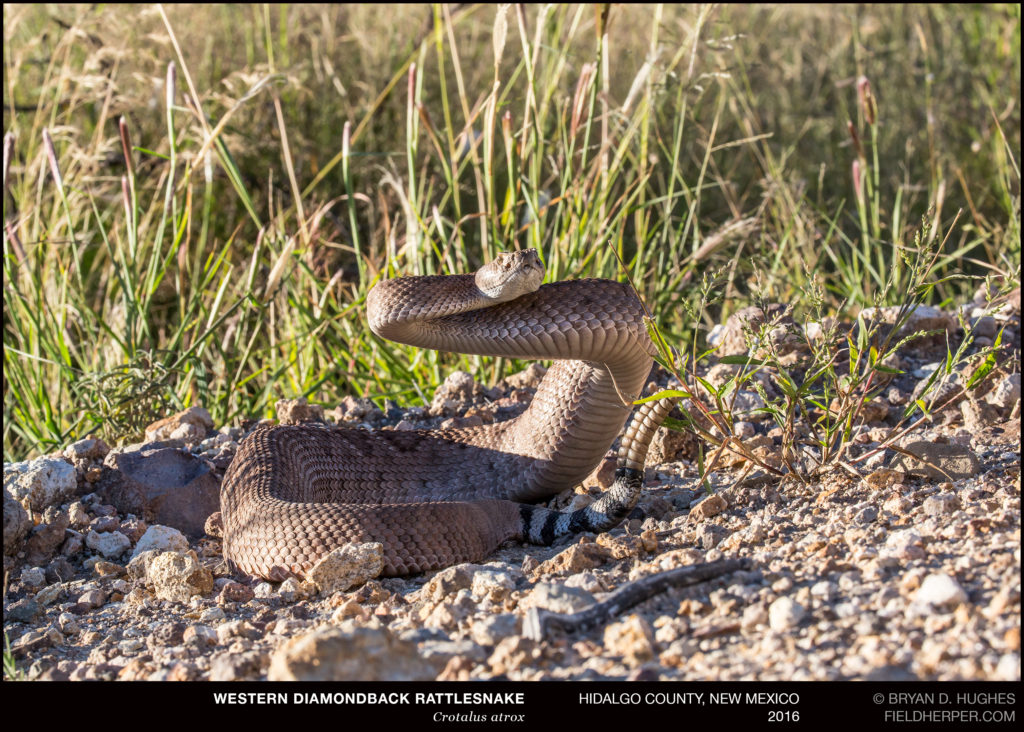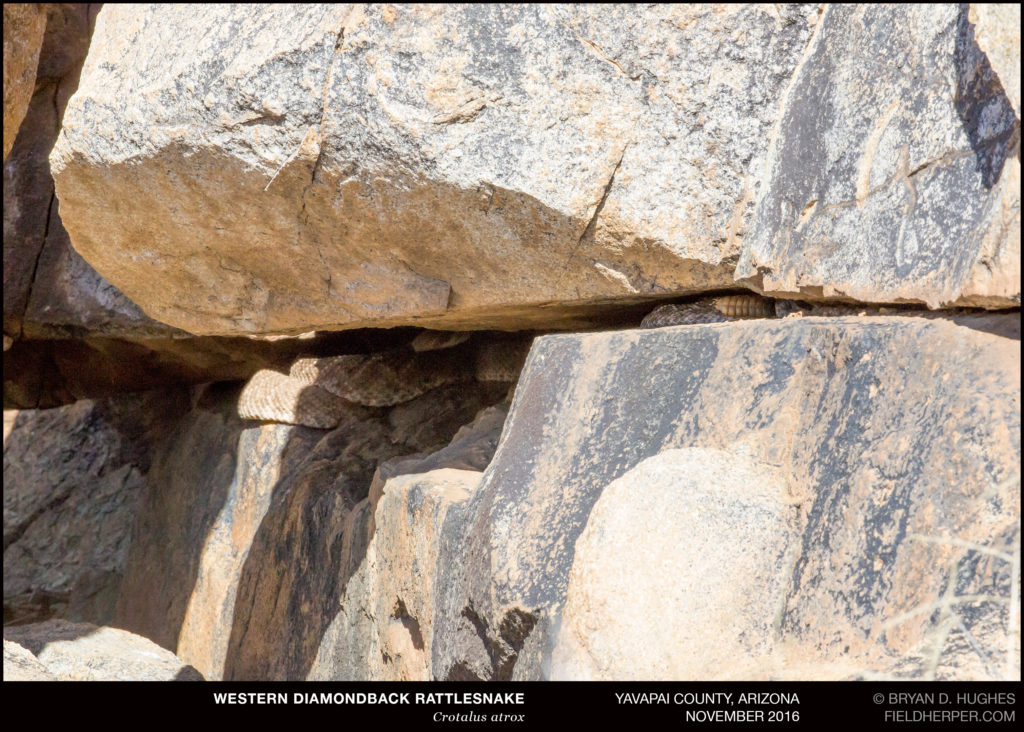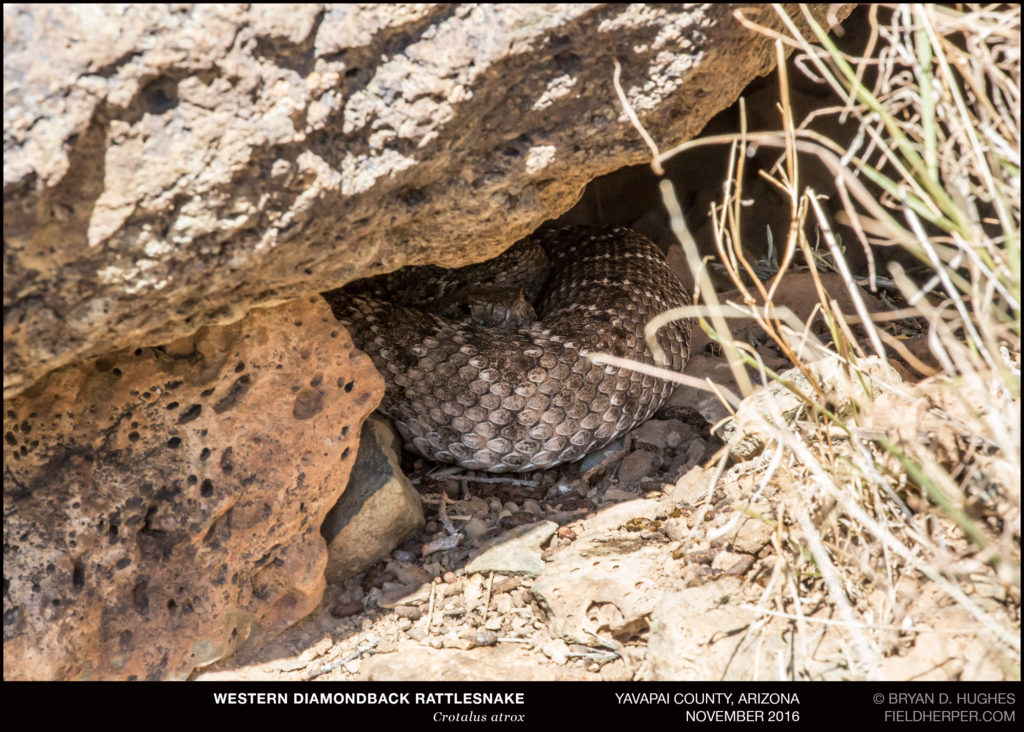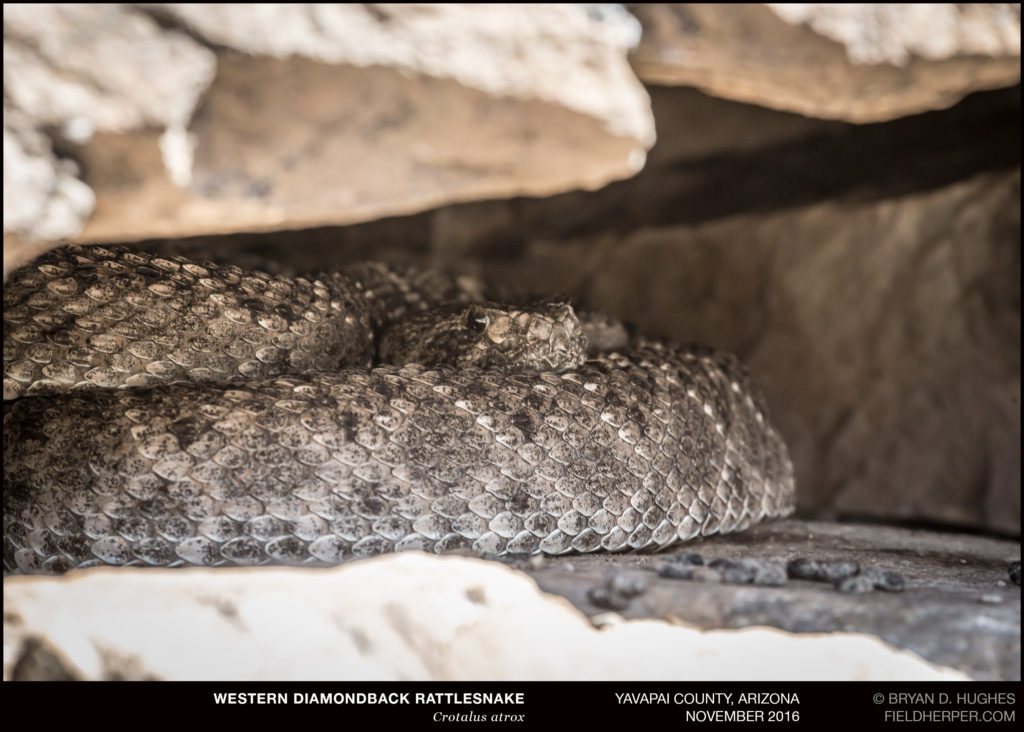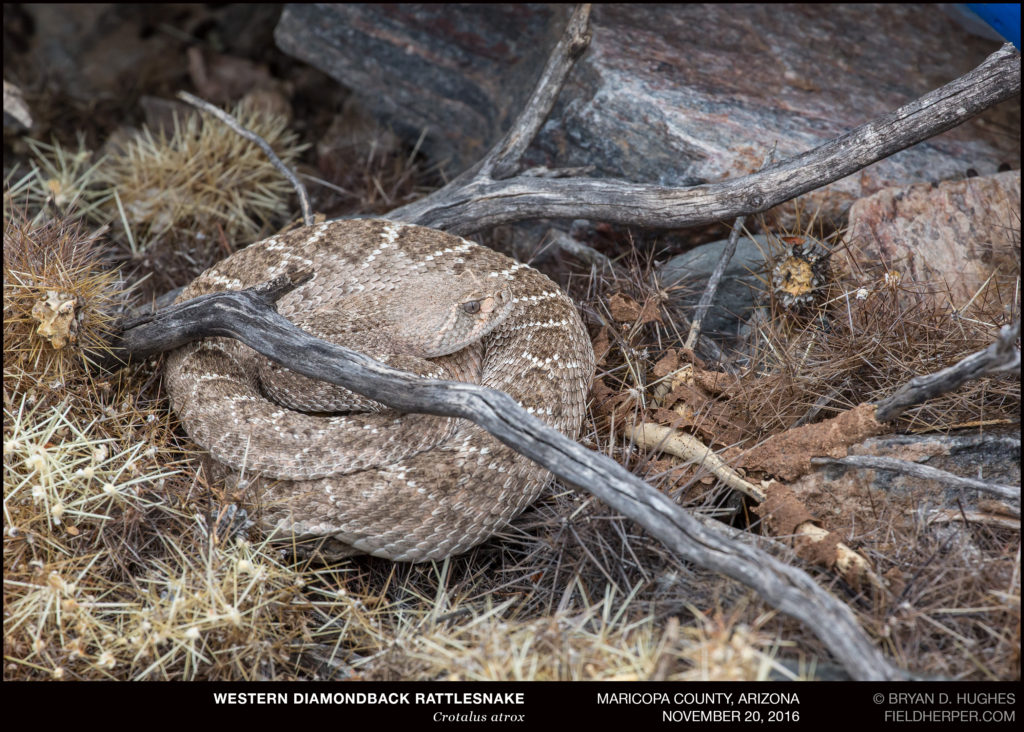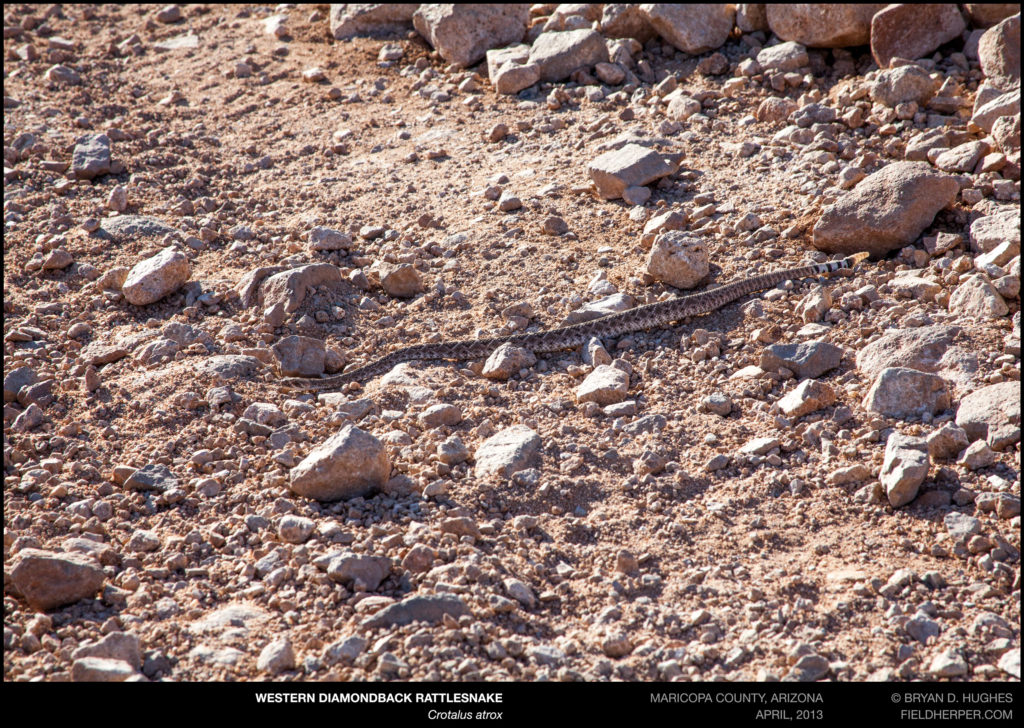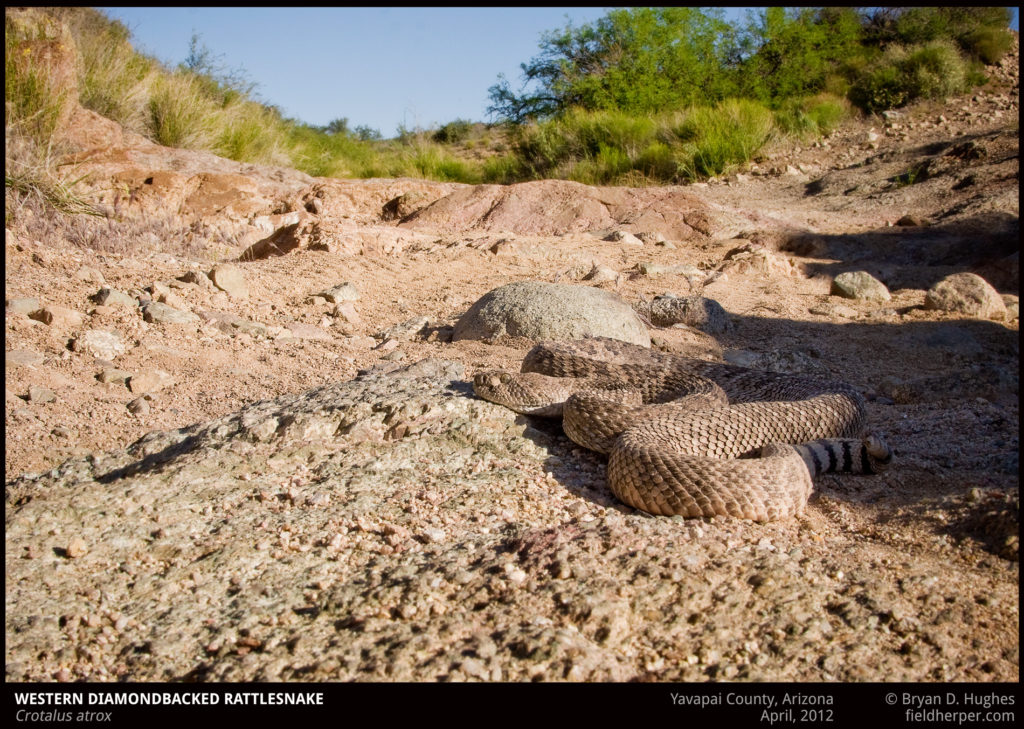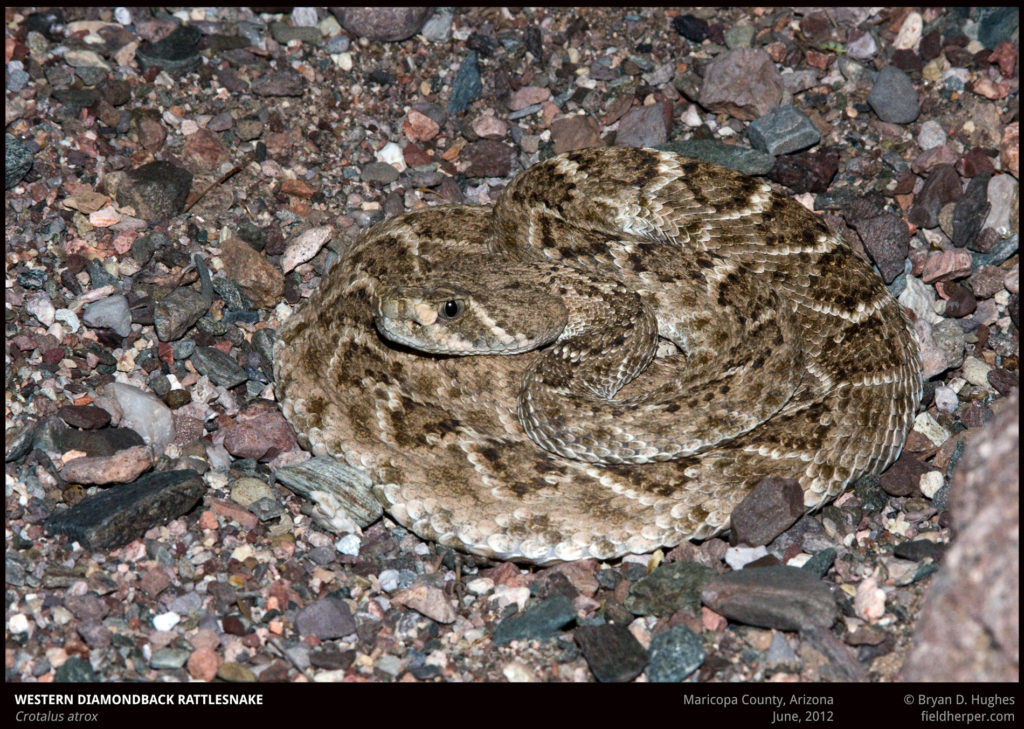There’s no better first post topic for our new blog, perhaps, than one highlighting the most commonly removed snake species in the city. They’re also one of the most iconic animals in the American West: The Western Diamondback Rattlesnake.
The Western Diamondback Rattlesnake is, as far as rattlesnakes go, a generalist. It can live in a wide variety of habitat and climates. In Arizona, this means any area where the city borders native Sonoran Desert habitat is also likely a resource for the Western Diamondback. Especially in areas North of the 101 in Scottsdale and Phoenix, where landscaping is a mix of native desert features and plants, rattlesnakes make their home.
We’ve relocated Western Diamondbacks from almost everywhere in the city at one time or another. Some of them, like those that show up in the center of the city, get there by hitchhiking in vehicles or landscaping materials. Some are intentionally captured and brought there by people that think that a rattlesnake would be a great pet, and released once they realize how wrong they were! For the most part, Western Diamondback Rattlesnakes are limited to areas that come into direct contact with native desert.
How big does the Western Diamondback Rattlesnake get?
In the Phoenix area, a very large Western Diamondback Rattlesnake is about 4 feet long, with most reaching a slightly smaller adult size in the 3.5′ range. While some individuals may get into the 5′ range, it is very rare. In fact, in over a thousand rattlesnakes captured and relocated by Rattlesnake Solutions over the years, only one even got close, at an estimated 4’10”. It does happen, but to say “diamondbacks get 5′ long” is a lot like saying “an adult human is 7′ tall. It happens, but it’s not common, and generally not useful when discussing size. Things especially fall apart when a person claiming to see a 6′ diamondback also claims to see them often.
What is most likely, is that people just aren’t as great at estimating size of objects as we like to believe we are, combined with just how bad our memories actually are with remembering the details. If you want to do a simple experiment, get a 4′ (or so) stretch of rope or hose, and coil it in the bushes in the backyard. Ask someone to come out, without telling them why, and tell them to give you the size from 10′ away. If you get any answer that isn’t “how am I supposed to know, I’m not a tape measure!”, it likely won’t be anywhere near the actual size.
While there are some reports of Western Diamondback Rattlesnakes getting very large (over 7′ long), this is very rare, and even more rare here in Arizona. Diamondbacks found in the Eastern part of their range in Texas tend to get larger, in-part due to having larger prey to eat, and more of it. There are also genetic differences between these populations, with Diamondbacks East of the continental divide area (about the Arizona/New Mexico border) that may make our Western, Western Diamondbacks end up on the small end. Even more confusingly, there is a completely different species, called an Eastern Diamondback Rattlesnake, that does not live in Arizona at all, and gets larger than any other species of rattlesnake. All of this can cause some confusion when someone says, “hey, I saw a 6 foot diamondback!”, and tries to do some fact-checking on Google.
What part of the City has the most Western Diamondback Rattlesnakes?
Scottsdale 🙂 That’s an easy one. By looking at our relocation data over the years, the corridor above the 101, West to about the 51, has the highest rate of rattlesnake encounters. This isn’t just because of location – it’s more about what is there. Mostly new-ish developments, continued development, and natural landscaping contribute to wildlife encounters here. This doesn’t mean that if you live in North Scottsdale, you’re destined to meet a rattlesnake. … If your yard is within about a block of native desert habitat, however, it’s likely.
Further into the city, your odds of running into a diamondback are much lower. Even on mountains where other species of rattlesnake are fairly common, like Camelback Mountain or Mummy Mountain, diamondbacks have more or less been killed off by surrounding traffic and development.
“I’ve seen Western Diamondbacks … are those different than coontail rattlesnakes?”
This is a question we get from time to time, and no, they are the same species. Western Diamondbacks have a characteristic black and white banded tail just before the rattle. This can be used to identify them, and tell the difference between them and other species of rattlesnake. 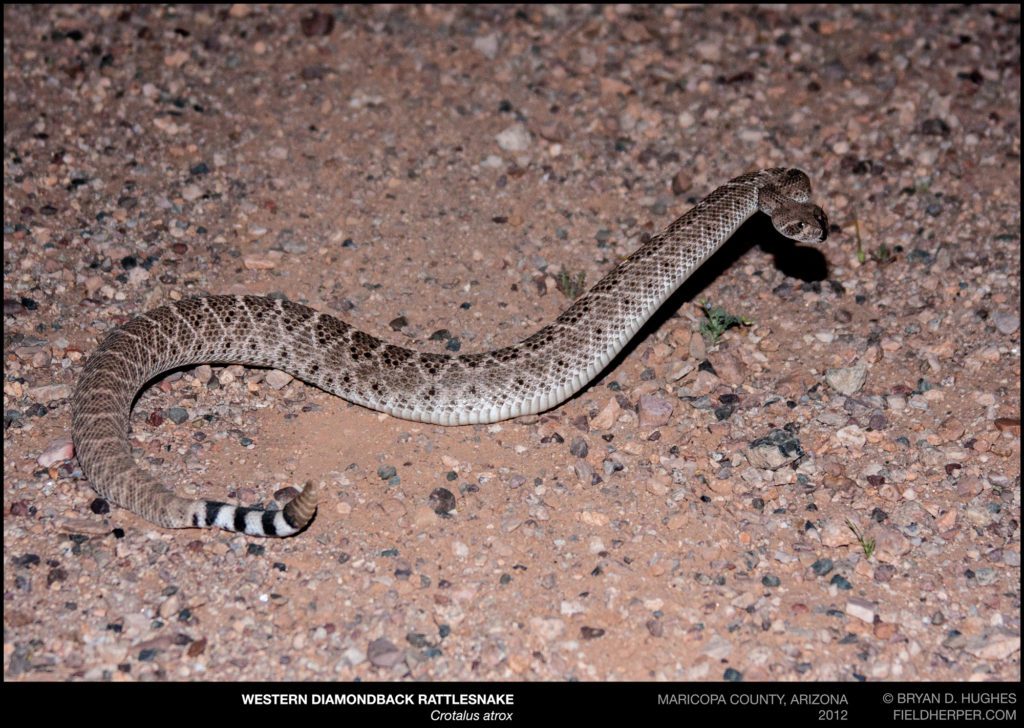
Western Diamondback Rattlesnakes are also a great example of some of the confusion that comes from common names given to animals. It seems that almost every place in the Western United States has something that the locals will call a “diamondback”, though in reality there is only one Western Diamondback, Crotalus atrox, which lives in the Southern half of Arizona, Southeastern California, and East into Oklahoma and Arkansas. In much of Utah, Idaho, and Wyoming, locals may refer to the local “diamondbacks”, but the rattlesnakes that live there are actually Prairie Rattlesnakes or Great Basin Rattlesnakes.
They are also often mistaken for Mojave Rattlesnakes. Usually the mistaken identity is given to the diamondback, due to the Mojave’s more famous reputation for being overly ‘aggressive’.
Here are more photos of wild diamondbacks! For as common as they are, I never tire of seeing them. If you’ve seen any, tell us about it in the comments.

